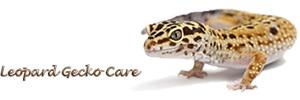Although a leopard gecko pet is easy to care for, it is important to see to its habitat or living conditions. In order to meet their health needs and overall well-being, housing and environment necessities must be met.
The best cage for a leopard gecko should be long and shallow. A pet gecko must be kept in glass cages like an aquarium to prevent it from escaping so wire cages are not an option. Unlike other geckos, a leopard gecko cannot walk well on any glass material. Providing proper ventilation is also an important point to consider.
The substrate you place on you gecko’s cage must not be hazardous and harmful to your pet. It should be easy to replace and clean. Health hazards a substrate can cause include respiratory diseases, infection and other toxic reactions. Substrates you should stay away from are wood chips, cedar, pine, and other loose particles. On the other hand, you may use paper towels, newspapers and reptile mats. Some people prefer using sand. The only problem with sand is its tiny particles that a leopard gecko can easily inhale or digest which could lead to serious health problems.
You may or may not landscape your pet’s environment. However, placing these things though it may seem unnecessary; help keep your gecko’s behavior as natural as possible. When landscaping, it is important not to use toxic and harmful materials which could injure your pet.
A leopard gecko’s environment should be thermoregulated because it is ectothermic or unable to produce its own body heat. The temperature of their cage during the day should be 80 to 85 degrees Fahrenheit. Temperature at night should be regulated and maintained at the 70’s. To ensure proper thermoregulation, you may use a thermometer. Heat sources are divided into two. Primary heat sources are responsible for maintaining and regulating the temperature of the entire cage. They include heat tapes, overhead heat sources and undertank heaters. Secondary heat sources include red or black basking lights, are responsible for creating hotspots.
Light is another important thing to consider for correct gecko cage temperature. The goal of lighting is to create natural light cycles for your pet gecko. In summertime, a gecko should have about 14 hours of light and 10 hours of darkness. A gecko needs 12 hours of light and 12 hours of darkness during winter. In order to follow these photoperiods, automatic timers are recommended to avoid the hassle of manually having to turn the light on and off. The light source must be placed on one side of the cage to allow heat variations. Black heat lamps and red lamps are the types of light you can use. Because a leopard gecko is nocturnal, its body is not attuned to bright light.
Exposure to bright light may stress your pet gecko. Hiding places are important to geckos to escape the light. These hiding places may be in the form of plants, stones and any other shelter your gecko can sleep and conceal itself in.










